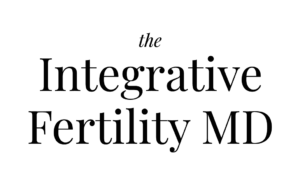The journey through infertility can be filled with stress, anxiety, sadness, frustration, and loneliness. I have heard from couples that they feel like their bodies are broken or aren’t good enough because of their fertility struggles or have tried to find ways to detach themselves from the disappointments of unsuccessful attempts at trying to conceive on their own. Yoga is an excellent tool to facilitate calm and help support patients on their fertility journey. The practice of yoga may allow people to reconnect to themselves, to each other, and to find a sense of community.
Many women who are experiencing infertility feel stress and disconnectedness from their body. Yoga is a way to reduce stress and rebuild the mind-body connection. Our emotions don’t just exist in our minds, we can also carry them with us in our bodies. This can show up as muscle tension, physical pain, digestive issues, or fatigue. You helps you to avoid holding un-processed emotion in your body.
Asanas Allow Reconnection and Physical Benefits
Researchers have found our minds may cope with difficult emotions by disconnecting from a sense of self-awareness and body-awareness. A goal of healing and wholeness becomes reconnecting with your body in a safe, comfortable, healthy way. Yoga is excellent at filling this need. The physical poses, or asanas, in yoga, allow you to connect to your body through movement and breath.
The yoga asanas also help to strengthen the body and improve blood flow to the reproductive organs. Some research has shown improved blood flow and circulation as it relates to a higher abdominal temperature that may correlate to enhanced fertility.
Some asanas particularly helpful for fertility include those that are hip openers, such as lunges, butterfly pose, and the reclining bound angle pose, and those that bring calming energy to the pelvis such as the legs up the wall pose, the seated forward bend, and the standing forward bend.
Similarly, some yoga poses are also beneficial for stimulating the endocrine system and restoring hormonal balance where needed. This applies to men as well as women. Choosing yoga poses that target specific trigger points may help to regulate monthly cycles, improve libido, rebalance thyroid function, stabilize blood sugar, and support fertility health. To help support hormone balance, you might select poses such as fish pose, sun salutations, garland pose, mariachi’s pose, and the bound angle pose. Illustrations of these can be found here.
Yogic Breathing and Stress
Yoga’s role in stress reduction is well documented. Yoga is a multidimensional system that includes physical poses, breathing, and meditation. Yogic breathing is also known as pranayama and translates from the Sanskrit ‘to control life force.’ Essentially, this refers to breathing in certain patterns that require you to inhale and exhale in ways that draw greater awareness to your breath. There are many different types of pranayama, and each has a specific role, such as restoring balance or focusing energy.
Deep breathing allows us to reduce stress and manage body functions like blood pressure, immune health, and concentration. Ujjayi breath is probably the most common type of pranayama used in foundational yoga classes and helps to bring focus to your mind and breath. This is also used to calm your mind during meditative practices.
Yoga as a Sense of Community
While yoga can be practiced on your own, you may benefit from practicing in a class setting where you can connect with a supportive community of others sharing similar experiences. You may choose to seek out classes designed for restorative or gentle hatha yoga, as these would be most supportive of the asanas, breathwork, and meditations supporting stress release. Sometimes knowing you are not alone in your journey is helpful, While your experiences are unique to you, connecting with others who may be sharing a common story.
Research has shown that women who practice emotion-focused coping skills, such as reducing stress, may experience improved results when participating in fertility treatments. Sometimes the problem itself cannot be immediately resolved the way we want; instead, we need to examine the way we respond to the situation. Having resources such as yoga, breathing, and mediation available for stress reduction may be valuable.
Resources for incorporating yoga and meditation into your habits can be found on my website along with this beginner’s yoga sequence. I encourage you to find a non-toxic yoga mat, made from biodegradable natural tree rubber, manufactured with zero waste and no harmful plasticizers. Manduka mats are free of toxic chemicals, dyes, and phthalates. If you would like to read more about the impact of environmental toxins on fertility, an article can be found here on the blog.
Integrative fertility may be a choice for you if you would like to combine natural and modern therapies in your fertility journey. If you are interested in a consultation to see if integrative techniques can further support your fertility journey, contact me at Shala Salem, MD.



